Do you often work in multiple apps simultaneously? Toggling between them can be confusing, time-consuming, and even, a nightmare too when some app doesn’t play well. Thankfully, Windows 11 has a generous solution to boost your multitasking routines with all new Snap Layouts that make it easier than ever to split-screen on your Windows PC.
Windows 11 Snap windows feature allows you to view and access multiple windows at once by splitting your screen into multiple sections. You can view a maximum of four app windows at once (six, if you’ve got a high-resolution display) with each occupying a defined section of the screen.
Before we move forward, you must check if the ‘Snap windows’ setting that allows splitting the screen is enabled.
Enable ‘Snap windows’ in Settings
The ‘Snap windows’ feature is enabled by default on Windows 11, but it’s good to verify the same before you proceed.
To check if the Snap windows feature is enabled, press WINDOWS + I to launch the ‘Settings’ app on your PC, it should open with the System settings view by default.

In System settings, scroll down a bit and click on the ‘Multitasking’ option on the right panel of the settings window.
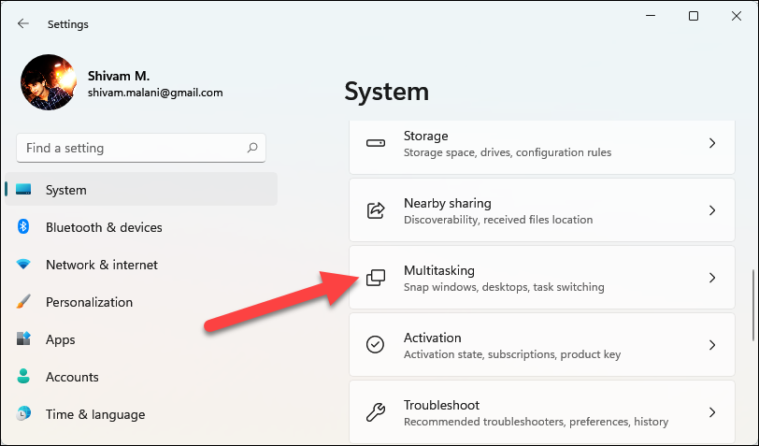
Now, verify if the toggle under ‘Snap windows’ is enabled. In case it isn’t, click on the toggle to enable the setting.

Also, explore the various options listed under it and check/uncheck as per requirement. However, it’s recommended that you don’t alter the default settings until you have a fair idea of the concept.

Using Windows 11 Snap Layouts
Windows 11 has made splitting the screen a lot easier and quicker with Snap Layouts integrated right into the maximize button for each window. You don’t need to hold and drag a window to the side, or work with the keyboard shortcuts to trigger Snap windows.
To use Snap Layouts in Windows 11, hover the cursor over the maximize button near the top-right corner of a window. A small box will appear with four or six different options for to split the screen.
- The first option splits the screen into two equal parts, thus both windows will occupy equal space on the screen.
- The second one also split the screen in two, but there is an unequal distribution in terms of screen space occupied by the windows. In this case, the one on the left occupies more space than the one on the right.
- The third option splits the screen into three, the left-half occupied by one window, and the right-half further split into two quarters.
- The fourth option splits the screen into four parts, with each window occupying a quarter of the screen.
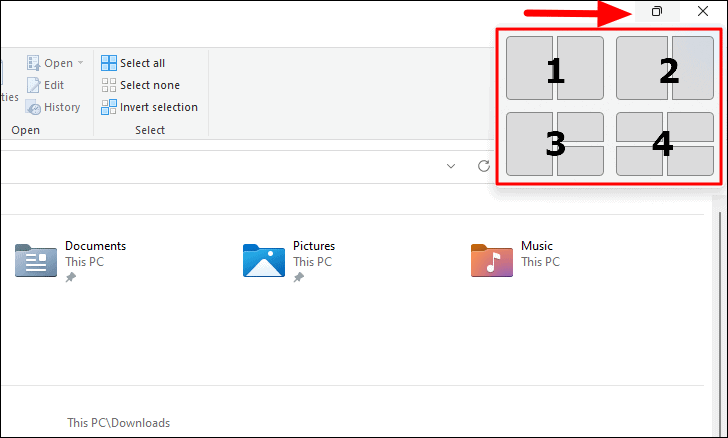
Now, let’s see how it works.
Split Screen into Two Sections
Launch the app windows that you want to split, hover the cursor over the maximize button, and select one of the parts of the first option.

The current app window will now snap into the selected half of the screen, and you will find other open apps as thumbnails in the other half. Select the one that you want to add to the other half of the screen.

You now have two app windows on the screen, and can access and work on them simultaneously.
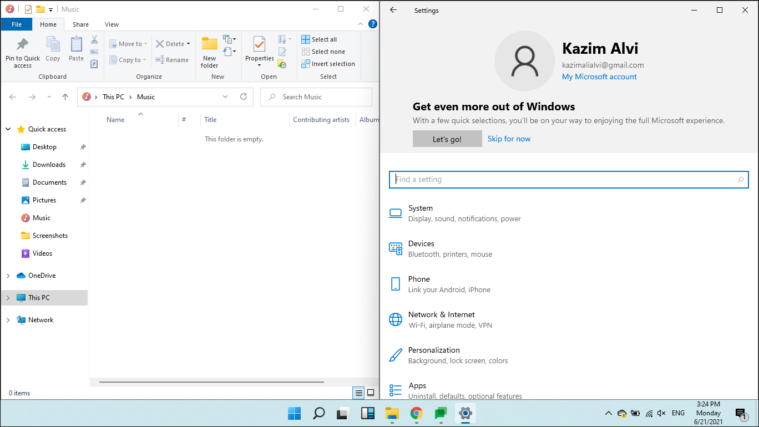
You also have the option to resize the windows. Just move the cursor to the line that separates the two windows and a dark thick line will appear. Now, hold and drag the line in either direction to resize.

You can similarly split the screen into two with the second option and resize the windows, if required.
Split Screen into Three Sections
If you plan to work on three apps simultaneously, there’s an option to split the screen into three. Hover the cursor over the maximize button and select either of the three parts in the third option. For your better understanding, we have selected a quarter, although the concept remains the same.

The current window will fit the part you selected earlier (top-right quarter) and the other open windows will be displayed as thumbnails in the left half. Select the second window that you want to work on. Also, remember that since it would be occupying double the space compared to the other two, choose the one that requires a higher degree of attention and clarity.
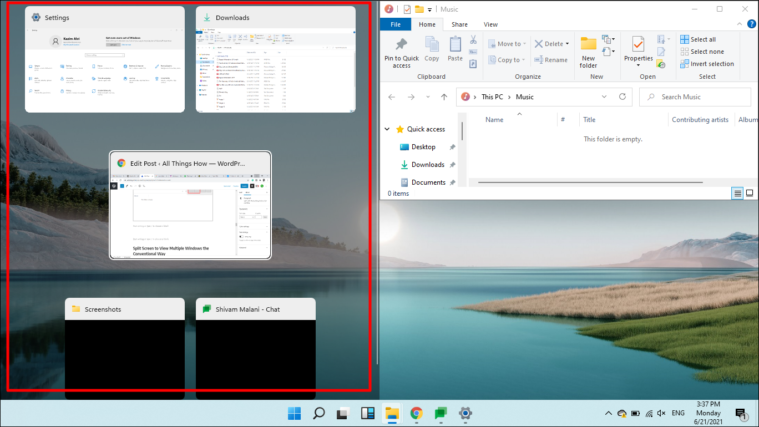
After you have selected the second window, it will take up the left half and the other open windows will be displayed as thumbnails in the remaining quarter. Select the desired app and it will take up the last quarter.
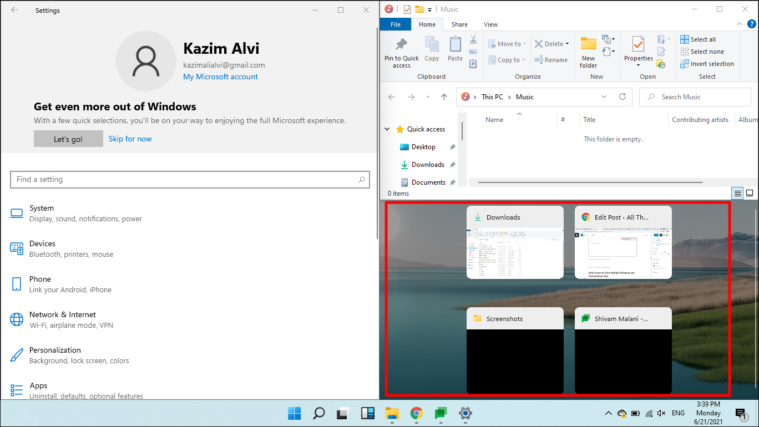
You now have three open windows on the screen, split according to your choice. The concept of resizing remains the same, just hold and drag the line that separates two windows.
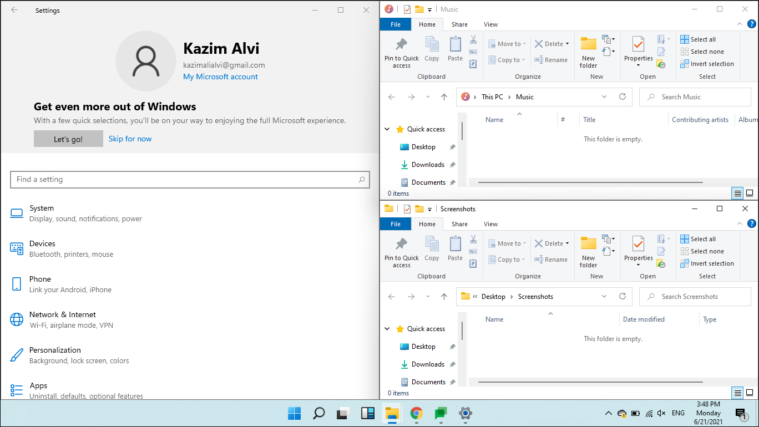
Split Screen into Four Sections
The concept of splitting the screen into four is pretty much the same as what we discussed in the last section. Hover the cursor over the maximize button of the current window, select the desired quarter in the last option, and select the other apps to be on the split screen accordingly.
Note: Splitting the screen into three or four windows affects the visibility and clarity, thereby nullifying the whole purpose. Hence, it’s recommended that you do it on a larger display only.
Split Screen by Manually Snapping Windows to the Sides
If you had been using the split-screen feature on Windows 10, the process was quite different. Windows 11 has made it a lot simpler but hasn’t done away with the conventional approach, which we will discuss in the following sections.
There are two ways to split the screen to view multiple windows at once. You can either hold, drag, and drop the Windows to the required corner or use the keyboard shortcuts for the same. Let’s start with splitting the screen in two and once you get a grasp of the concept, move our way up to four.
To split the screen into two, hold and drag the desired window to either of the sides as far as the cursor would go. When you find a hazy outline that indicates the portion to be taken up by the app in the background, release the cursor. Also, you can also simply open the desired window and press the WINDOWS + LEFT/RIGHT ARROW KEY to split the screen into two.

With the default settings in place, once one of the windows takes up half the screen, the other open windows will be displayed in the other half. Select the one that you want to add to the other side of the screen.
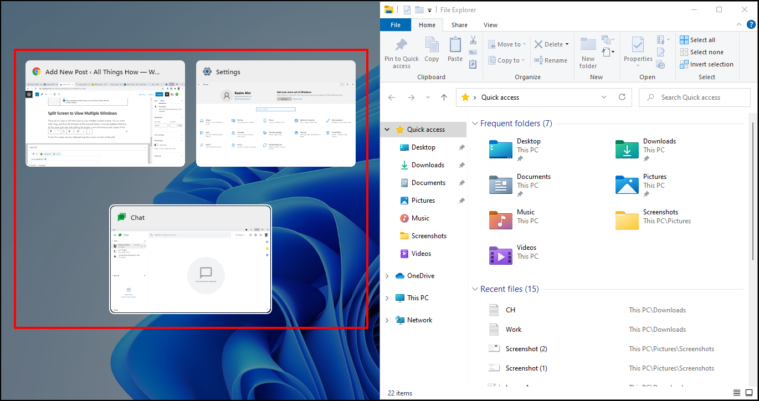
Once you have two windows on the screen, drag the line that separates them in either direction to resize the windows. The process to resize the windows remains the same in both methods.

To split the screen into three windows, hold and drag either of the open windows to the corner and once you see a hazy outline in the background that covers a quarter of the screen, release the cursor. Also, you could simply press the WINDOWS + UP/DOWN CURSOR KEYS (when it’s occupying half of the screen) to make a window take up a quarter of the display.
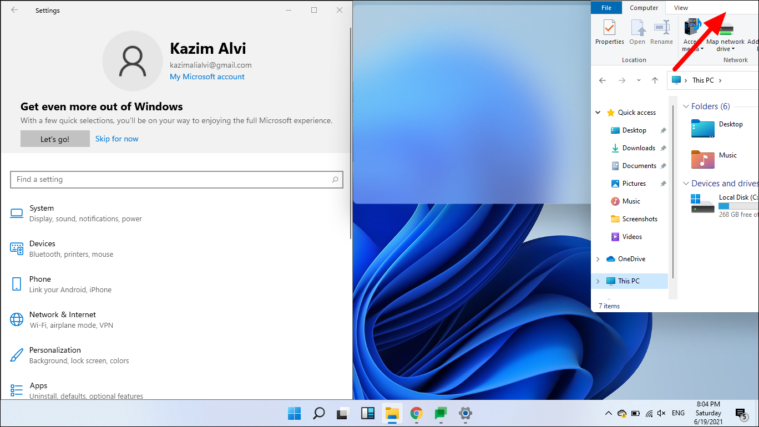
Once you have a vacant quarter on the screen, the other open apps will be displayed as thumbnails. Select the ones that you want to add.
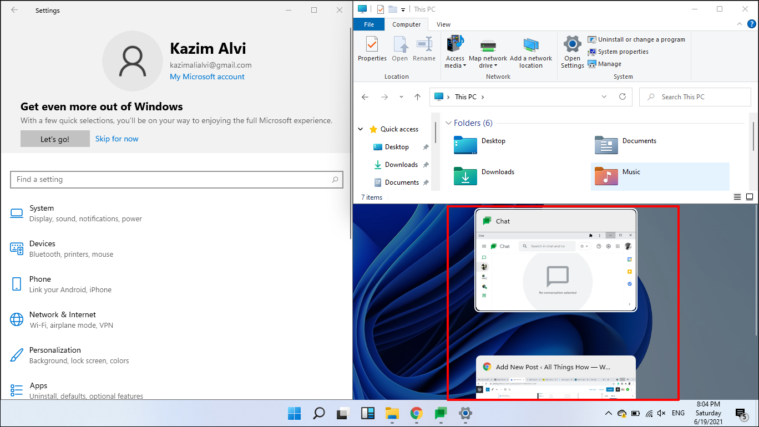
You now have three windows on the screen. Also, you can resize the windows by dragging the line that separates the windows, as you did earlier.
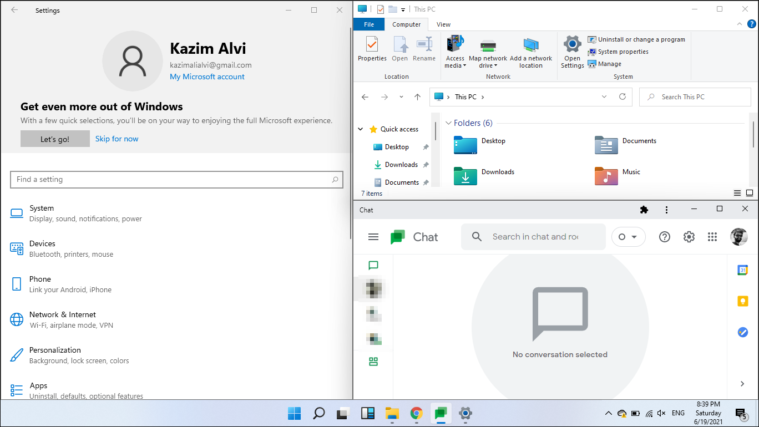
You can similarly split the screen into four and view and access the same number of app windows at once. This makes multitasking real easy.

That’s all there’s to ‘Split Screen’ in Windows 11. You can either use the new method introduced in Windows 11 or the conventional approach, whichever suits you better, and multitask like never before.










Member discussion